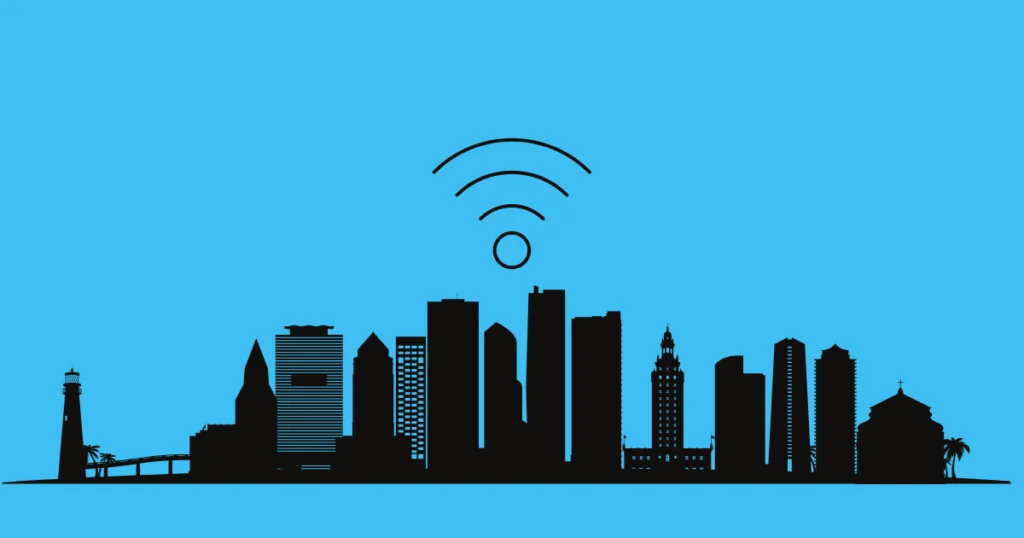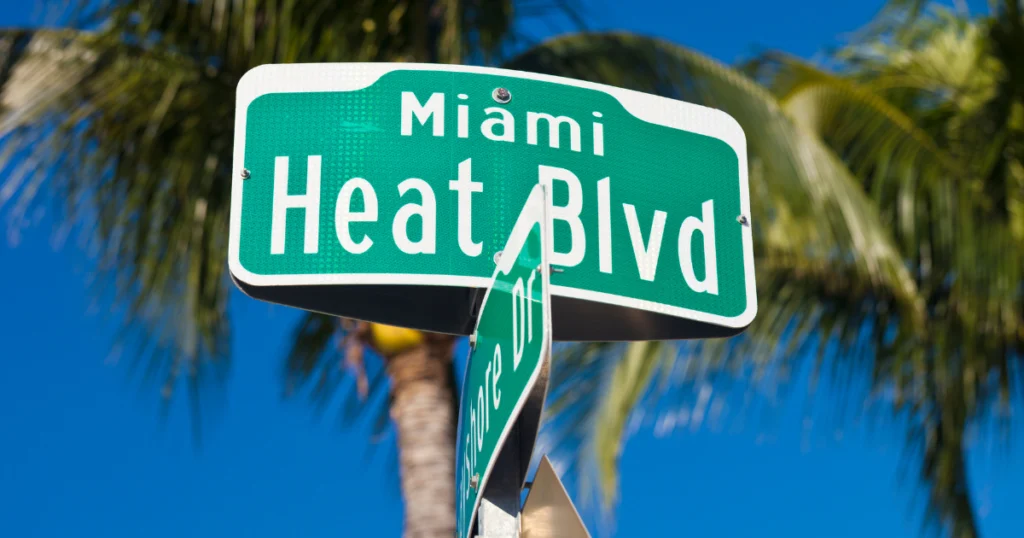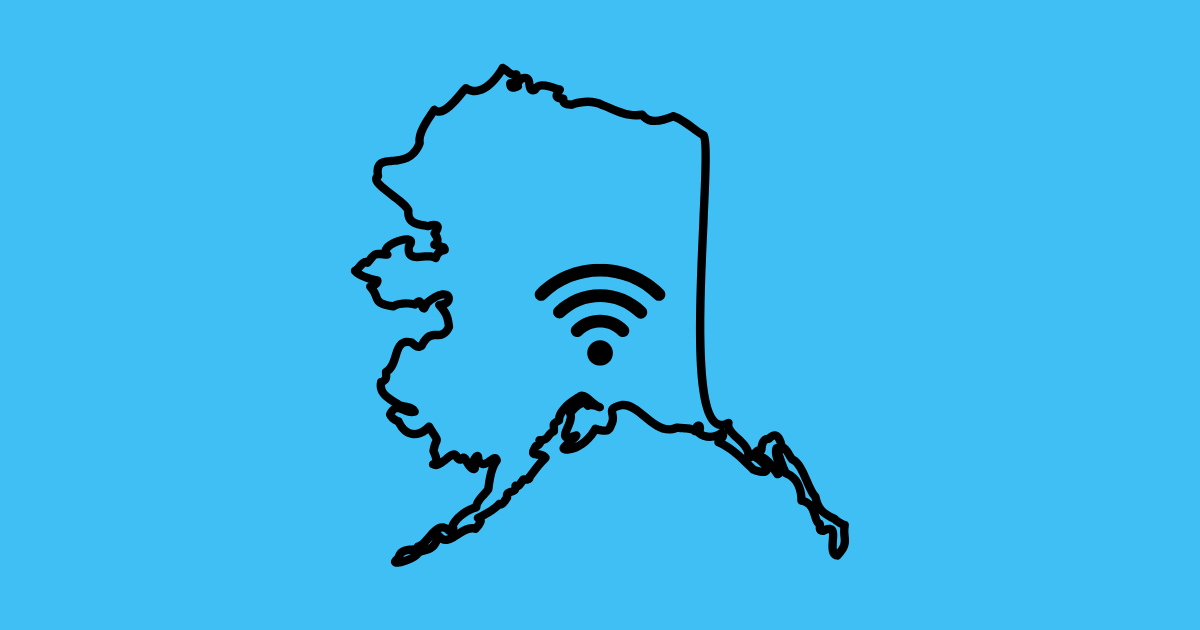Stress-free Internet access in Miami and Florida: the (really) useful guide!

Discovering Miami and Florida? Great idea! But before you head off to the beaches of South Beach or the parks of Orlando, let’s ask ourselves an essential question: how can you stay connected without blowing your phone budget?
Between prepaid SIM cards, eSIMs, pocket WiFi and promises of free WiFi everywhere, it’s hard to find your way around. Especially when you discover that some areas of Florida still resemble the Wild West in terms of network coverage.
In this practical guide, we’ll untangle all these options together so you can choose THE solution that really fits your travel style. Because yes, the needs of a family with three children are not the same as those of a digital nomad or a couple on a road trip.
Which SIM card do you need?
To get Internet access in Miami and Florida, if you are :
- For a family, opt for pocket WiFi or eSIM with sharing.
- Solo travelers choose a prepaid SIM card or a classic eSIM.
- Digital nomads invest in two different operators.
Other choices: depending on your budget, from local sim cards to unlimited packages).
For those in a hurry: eSIM with instant activation.
Remember: the best package is the one that corresponds to your actual usage. There’s no point paying for 50 GB if you use 2 GB a week.
Which solution best suits your travel style?
Family: reliability and shared connection
Family travel means juggling everyone’s needs. Dad wants to share the latest photos with the family, Mom wants to check her e-mail, and the kids… well, they just want YouTube to work in the car.
Pocket WiFi is the ultimate solution for families. And why? It can connect up to 10 devices simultaneously, and avoids negotiations (“It’s my turn to have Internet!”). Expect to pay between $7 and $12 a day, depending on your consumption.
An interesting alternative: eSIM with connection sharing on the parent’s phone. More economical ($15 to $30 for 7 days), it turns your smartphone into a mobile router. Beware, however, of the battery, which drains more quickly.
As a couple or solo: flexibility and security
For couples or solo travelers, the prepaid SIM card remains a timeless classic. Operators such as T-Mobile, Verizon and AT&T offer 15-day tourist packages starting at $25, with 2 to 5 GB of data.
You’ll also find SIM cards from specialist travel operators. At SIM USA, for example, we work directly with T-Mobile and AT&T to guarantee you the best possible coverage.
As a digital nomad or freelancer: data and redundancy
Digital nomads and freelancers, your needs are specific: lots of data, a stable connection, and above all no downtime during an important customer call.
The winning strategy? Redundancy. Combine a main eSIM with lots of data (50 GB minimum) and a backup SIM card on another operator. Total cost: $60 to $80 a month, but you sleep easy.
Unlimited packages from American operators are tempting, but beware of slowdowns after 22 or 50 GB depending on the operator. Also check the terms of use: some limit connection sharing.
Roadtrip (van, car, motorcycle): coverage in motion
Roadtripping in Florida is magical… until you find yourself without a network in the Everglades or on a back road near Gainesville.
Verizon dominates rural coverage in Florida. Their 4G/5G network covers 98% of the state, compared with 94% for AT&T and 92% for T-Mobile. If your itinerary includes national parks or rural areas, this difference can be crucial.
Pro tip: download offline maps from Google Maps or Waze before you leave. Even without Internet, you’ll still have GPS navigation.
Digital detox: how to stay in touch without the Internet?
A modern paradox: wanting to disconnect while remaining available for emergencies. The solution? A voice/SMS-only package, complemented by free WiFi in hotels and restaurants.
This approach forces you to slow down your pace and enjoy your trip to the full. You check your e-mails in the morning at the coffee shop, share your photos in the evening at the hotel, and the rest of the time, you live in the moment.
And if you’d rather be out of touch while enjoying your GPS: our data-only offer is for you!

SIM card comparison, eSIM, Pocket WiFi & free Wi-Fi
Prepaid SIM card The reliable classic. In-store or online activation, wide choice of operators, competitive prices. Disadvantage: physical handling and risk of losing your French SIM.
eSIM : Modern technology. Instant activation, no physical handling, perfect for short stays. Limitation: compatibility limited to recent devices.
Pocket WiFi The champion of sharing. Connects several devices, 6-8h battery life, ideal for families. Downside: one more device to carry and recharge.
Free WiFi: The economical option. Available in most public places in Miami, but limited security and variable speed. For basic use only.
Poor coverage zones in Florida: what no one is telling you
Florida is not a uniform digital paradise. Some areas remain problematic even in 2025.
The Everglades: No surprise, this protected area has sporadic coverage. Verizon does best, but expect outages.
Highway 441 between Gainesville and Ocala: Recurring black hole, all operators combined. Download your Spotify playlists first.
Florida Keys: Paradoxically, these tourist islands have uneven coverage. Key Largo and Key West are well covered, but the islands in between can be problematic.
Central rural areas: Around Lake Wales, Sebring, or Arcadia, 4G becomes temperamental.

Practical FAQs about the Internet in Miami and Florida
Will my French phone work in Florida?
Yes, if it’s unlocked and compatible with US frequencies (most recent smartphones are).
Can I buy a SIM card at the airport?
Absolutely. Miami International Airport has T-Mobile, Verizon and AT&T stores in all terminals.
Is free WiFi really free?
Yes, but with limitations: reduced throughput, limited connection time, and basic security. Avoid banking transactions.
How much do you plan to consume per day?
Basic use (messages, GPS, photos): 200-300 MB/day. Intensive use (videos, streaming, video calls): 1-2 GB/day.
Can I use my French package while roaming?
Technically, yes, but it’s expensive. Count 10-15 euros per MB depending on your French operator. In other words, watching a TikTok video can quickly cost 50 euros, and having internet access in Miami and Florida under these conditions can quickly become stressful!
Still not sure about your mobile or internet package? Contact us atwe’ll take care of everything!





